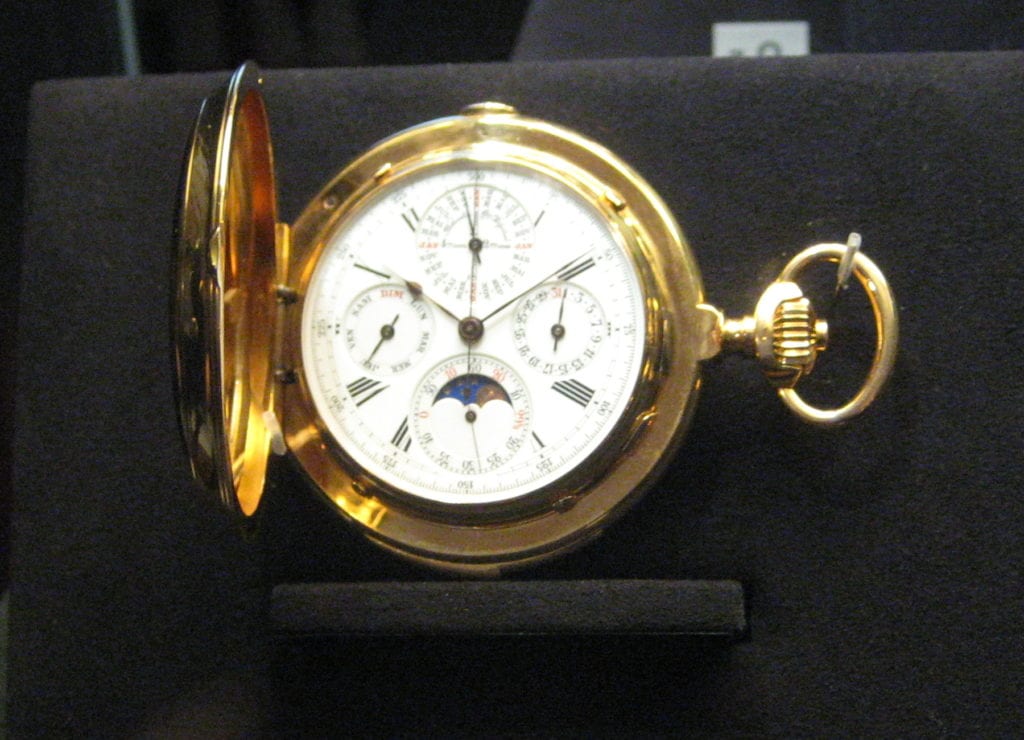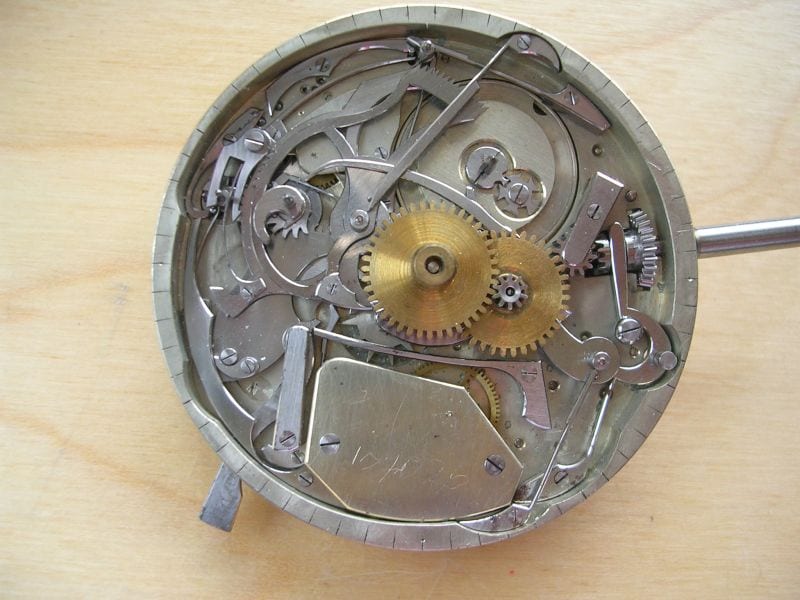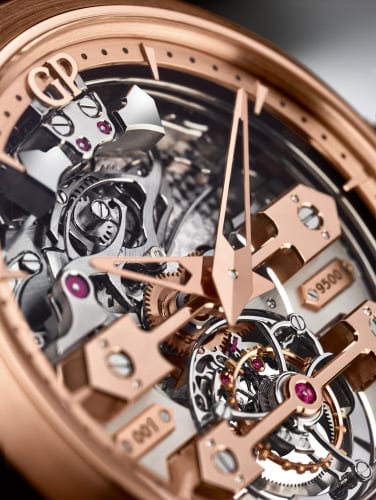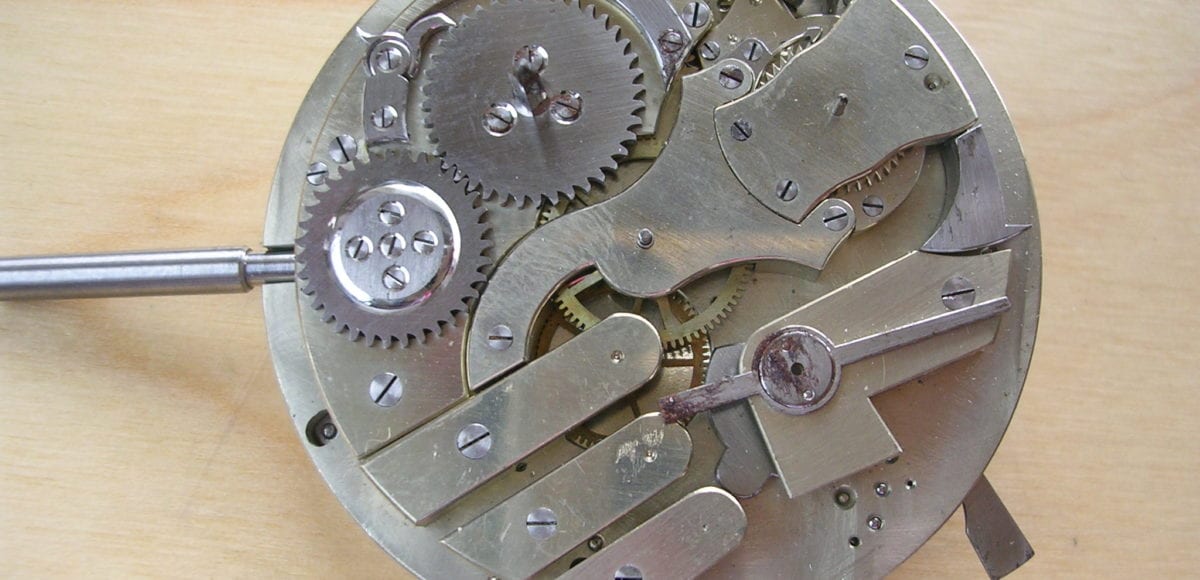Historical Uses of the Minute Repeater
Of all the watch complications, the minute repeater is one of the most unique, complex, and labor intensive. Both Edward Barlow and Daniel Quare claim to have debuted the first repeating mechanism back in the late 1600s. However, it was Quare who obtained the patent in 1687. Still, these early repeaters only chimed on the hour or quarter hour. It wouldn’t be until the next century that we’d see the first minute repeater.

PHOTO CREDIT WIKIMEDIA COMMONS
The minute repeater’s original function was to help people tell time in the dark before electricity. Unlike those early repeaters that automatically chimed on the hour or quarter hour, the minute repeater could chime on demand by activating the mechanism on the watch. Today, the initial purpose of the minute repeater is no longer necessary and may seem a bit antiquated. However, there’s a certain charm to this complication that’s withstood the test of time. Here, we’ll look at exactly how the minute repeater works and its role in modern watches.
The Technical Complexity of the Minute Repeater

PHOTO CREDIT WIKIMEDIA COMMONS
The repeater mechanism has arguably advanced exponentially from the early bells and chimes. However, the minute repeater is still a rather hefty mechanism in its modern incarnation. Still, making the space to accommodate a complication like the minute repeater is a relatively common issue watchmakers face. In addition to the spatial arrangement, there’s acoustics to consider that aren’t a typical part of a watchmaker’s design process. Here, it’s not just the inner workings that come into play. Every aspect of the watch’s design, down to the construction of the case impacts the sound the mechanism produces. Plus, for a minute repeater to be effective, there must be unique tones to designate the hour and minutes. Watchmakers typically achieve this by making the gongs that produce the sound different thicknesses and shapes. Lastly, it’s worth noting that you wind the minute repeater independently of the timekeeping components.
Telling Time with the Minute Repeater

PHOTO CREDIT WIKIMEDIA COMMONS
Now that you know a bit more about the minute repeater, let’s explore how you use one to tell time. Watches with a minute repeater feature a slide on the side of the watch case. To engage the minute repeater, you simply push the slide. Once you do, there are two hammers that are engaged. The first hammer is the hour indicator, and it will make its own unique sound, usually a lower tone. Similarly, the second hammer is the minute indicator, and it also produces its own unique sound, usually a higher tone. However, there’s also a combination of the two hammers. This will create a third unique sound that helps to indicate the minutes that take place after quarter past the hour. So, for example, say the time is 3:19. When you engage the minute repeater, the first hammer will sound three times. Then, the first and second hammers will sound together to indicate it’s quarter past the hour. Finally, the second hammer will sound four more times to indicate it’s a total of nineteen minutes past the hour.
Closing Thoughts
While minute repeaters are certainly a more niche complication, they continue to appeal to many collectors and watch nerds. The perfect combination of elements needed for a minute repeater makes them incredibly difficult to create, particularly in modern wristwatches. In fact, as the necessity of minute repeaters and demand for pocket watches diminished, minute repeaters started to become obsolete. However, after the resurgence of mechanical watches following the Quartz Crisis, there was a renewed interest in haute horology and complications like the minute repeater. Still, even today, the complication is relatively rare and certainly comes with a price tag.
Get More Articles Like This in Your Inbox
We're constantly creating great content like this. So, why not get it delivered directly to your inbox? By subscribing you agree to our Privacy Policy but you can unsubscribe at any time.






